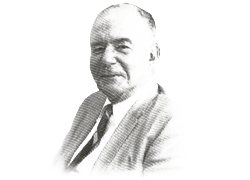Steven Strogatz is the Jacob Gould Schurman Professor of Applied Mathematics at Cornell University. He holds a joint appointment in the College of Arts and Sciences (Department of Mathematics) and the College of Engineering (Sibley School of Mechanical and Aerospace Engineering). Strogatz works in the areas of nonlinear dynamics and complex systems, often on topics inspired by the curiosities of everyday life. He is perhaps best known for his 1998 Nature paper on “small-world” networks, co-authored with his former student Duncan Watts. As one measure of its impact it was the most highly cited paper about networks between 1998 and 2008, across all scientific disciplines, as well as the sixth most highly cited paper–on any topic–in all of physics. He has received numerous awards for his research, teaching, and public service, including: a Presidential Young Investigator Award from the National Science Foundation (1990); MIT’s highest teaching prize, the E. M. Baker Award for Excellence in Undergraduate Teaching (1991); the J.P. and Mary Barger ’50 Teaching Award (1997), the Robert ’55 and Vanne ’57 Cowie Teaching Award (2001), the Tau Beta Pi Teaching Award (2006), and the Swanson Teaching Award (2009), all from Cornell’s College of Engineering; and the Communications Award from the Joint Policy Board for Mathematics (2007), a lifetime achievement award for the communication of mathematics to the general public. In 2009 he was elected a Fellow of the Society for Industrial and Applied Mathematics for his “investigations of small-world networks and coupled oscillators and for outstanding science communication.” In 2012 he was elected to the American Academy of Arts and Sciences. Professor Strogatz has been lauded for his exceptional ability as a communicator. He received the Communications Award–a lifetime achievement award for the communication of mathematics to the general public, awarded by the four major American math societies–in 2007. He has also filmed a series of 24 lectures on Chaos for the Teaching Company’s Great Courses series. Professor Strogatz has been a frequent guest on National Public Radio’s RadioLab. He wrote a weekly column on mathematics for The New York Times in spring 2010 and fall 2012.
Expertise
Current Research Interests
Mathematical explorations of the small-world phenomenon in social networks; complex networks in the natural and social sciences using ideas from graph theory, statistical physics, and nonlinear dynamics
Selected Publications & Presentations
- The Joy of x : A Guided Tour of Math, from One to Infinity. Houghton Mifflin Harcourt, 2012.
- Sync: The Emerging Science of Spontaneous Order. New York: Hyperion, 2003.
- “Exploring Complex Networks.” Nature 410, 2001. Pp. 268-76.
- (With D. Watts) “Collective Dynamics of ‘Small-World’ Networks.” Nature 393, 1998. Pp. 440-2.
- (With K. Wiesenfeld and P. Colet). “Synchronization Transitions in a Disordered Josephson Series Array.” Physical Review Letters 76, 1996. Pp. 404-7.
- Nonlinear Dynamics and Chaos: With Applications to Physics, Biology, Chemistry, and Engineering. Reading, MA: Perseus Books, 1994.
- (With I. Stewart) “Coupled Oscillators and Biological Synchronization.” Scientific American 269.6, 1993. Pp. 102-9.
- (With K. Cuomo and A. Oppenheim). “Synchronization of Lorenz-Based Chaotic Circuits, with Applications to Communications.” IEEE Transactions on Circuits and Systems-II: Analog and Digital Signal Processing 40, 1993. Pp. 626-33.
- “Love Affairs and Differential Equations.” Mathematics Magazine 61, 1988. Pg. 35.
- The Mathematical Structure of the Human Sleep-Wake Cycle. Lecture Notes in Biomathematics 69. New York: Springer-Verlag, 1986.

